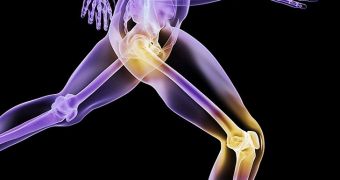Suffering a ruined joint is a sure-fire way of ruining your whole life, but sometimes it just happens, whether because of an accident or some sort of disease. In North America, this field of medicine needs more attention than in other parts of the world.
It is fortunate, then, that 3D printing technology has advanced so quickly over the past few years. Just another year or two and there might be a reliable way to produce replacement joints for shattered wrists, ankles and knees.
At the moment, artificial joints can be made from plastics or metals, which are far from ideal because they break down in 10 to 20 years and might not be that easily accepted by the human body in the first place. Also, making the joints is a lengthy, involved process.
Now, though, doctors Rita Kandel, Marc Grynpas, and Andras Nagy at Mount Sinai’s Samuel Lunenfeld Research Institute have begun work on 3D bioprinted joints.
They are getting help from many bioengineers, surgeons, biologists and stem cell biologists. The goal is to use a patient's own bones to create new bones from which the new joints can be fashioned.
More importantly, they have raised the theory that 3D printing technology could simply be used to print the wrists from bone tissue.
The process would start with the taking of an X-Ray of the damaged joint. Then the data would be converted into a 3D computer model. Said model would then be sent to a 3D printer that would use porous material to reconstruct the bone shape needed for the joint.
The material (bioprinted plastic or whatever else) would support cell growth, meaning that it would be able to integrate with natural cartilage. Even more importantly, bone would be able to grow through the material (as we said before, it is porous), taking its place as the substitute degrades over time.
So you could say that the 3D printed replacement joints are a bit less long-lived than current solutions, but for them, it is a good thing. It's more like a long-term treatment instead of an (internal) prosthesis.
As far as personalized medicine goes, this will be one of the most stellar examples if it turns out favorable results, which it has no reasons not to. Unfortunately, a lot of study and evaluation needs to be undertaken before procedures can be tried out. Thus, it will be several years still before human trials can begin.

 14 DAY TRIAL //
14 DAY TRIAL //